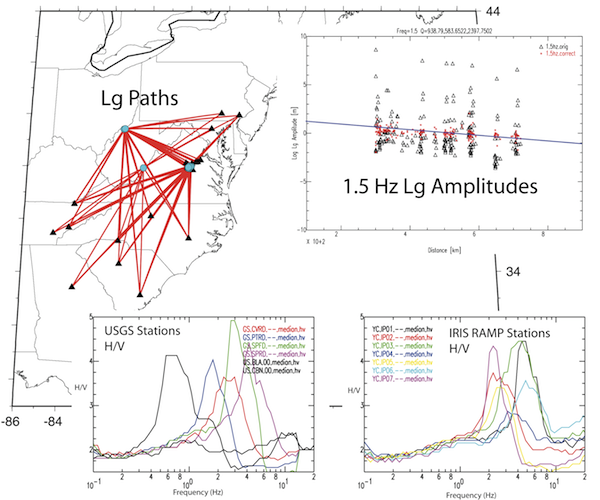2012 IRIS Workshop
Eastern US Attenuation and Site Amplification Characteristics from the Mw 5.8 Central Virginia Seismic Zone Earthquake of August 23, 2011 and Aftershocks
D. McNamara: USGS, R. Williams: USGS, M. Chapman: Virginia Tech, Blacksburg, M. Withers: CERI, Memphis, TN, S. Horton: CERI, Memphis, TN, A. Meltzer: Lehigh University Bethlehem, PA, N. Barstow: IRIS
An Mw 5.8 earthquake (depth=6km) occurred on August 23, 2011 (17:51:04 UTC) near Mineral, Virginia, which was widely felt from Maine to Georgia along the eastern seaboard and west to Chicago and western Tennessee. The USGS tallied nearly 142,000 felt reports submitted to the “Did You Feel It” Internet community intensity system, making it the most widely felt earthquake since the Web site began and demonstrating that more people felt this earthquake than any other in U.S. history. In the days following the mainshock, 46 portable seismic stations were deployed by several organizations, with 8 systems installed in time to record the largest aftershock to date (M4.5). We present results from our post-earthquake response, including attenuation and site amplification observations using portable aftershock station data.

Full-resolution graphics file in original format: 0034.png